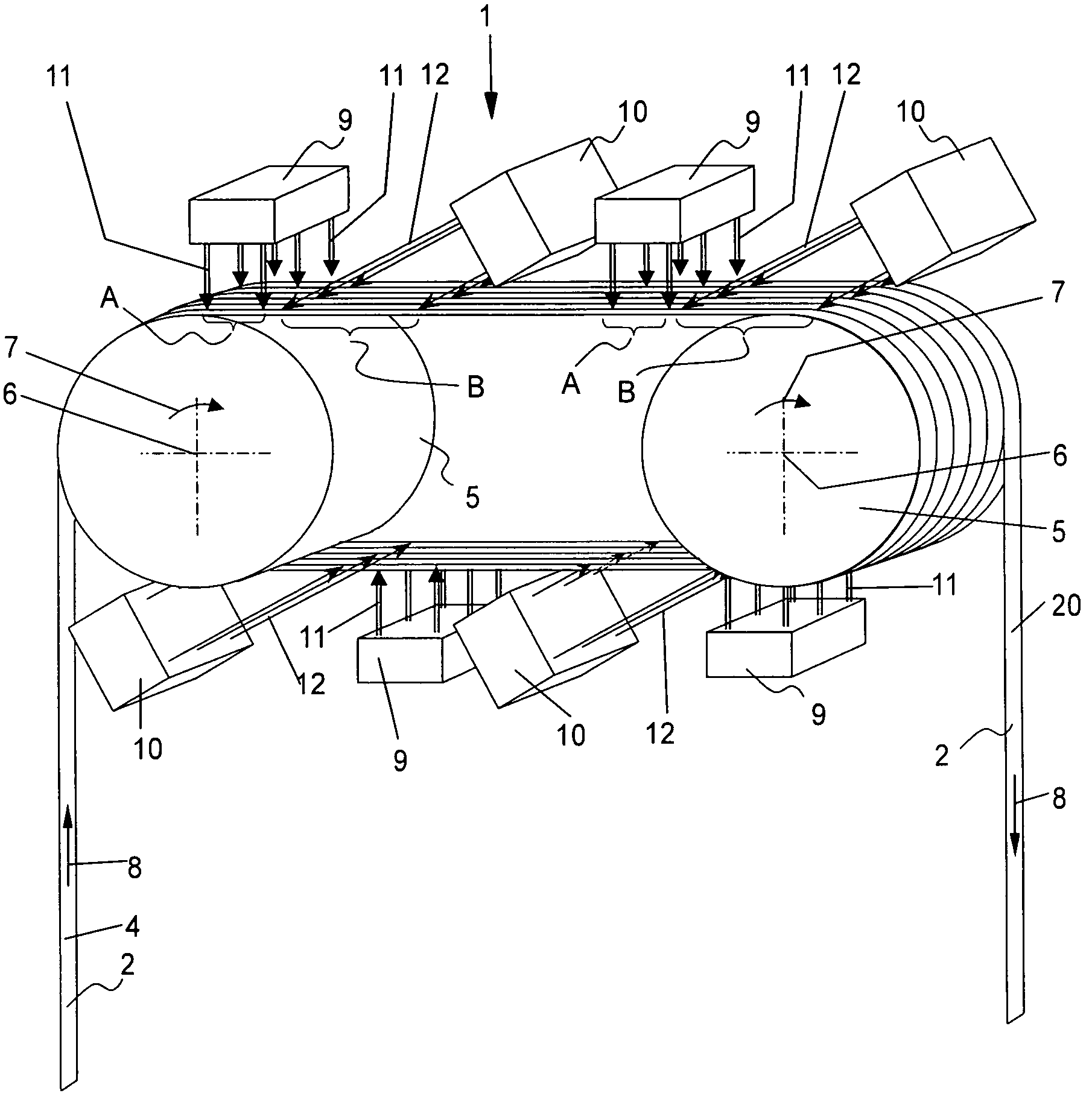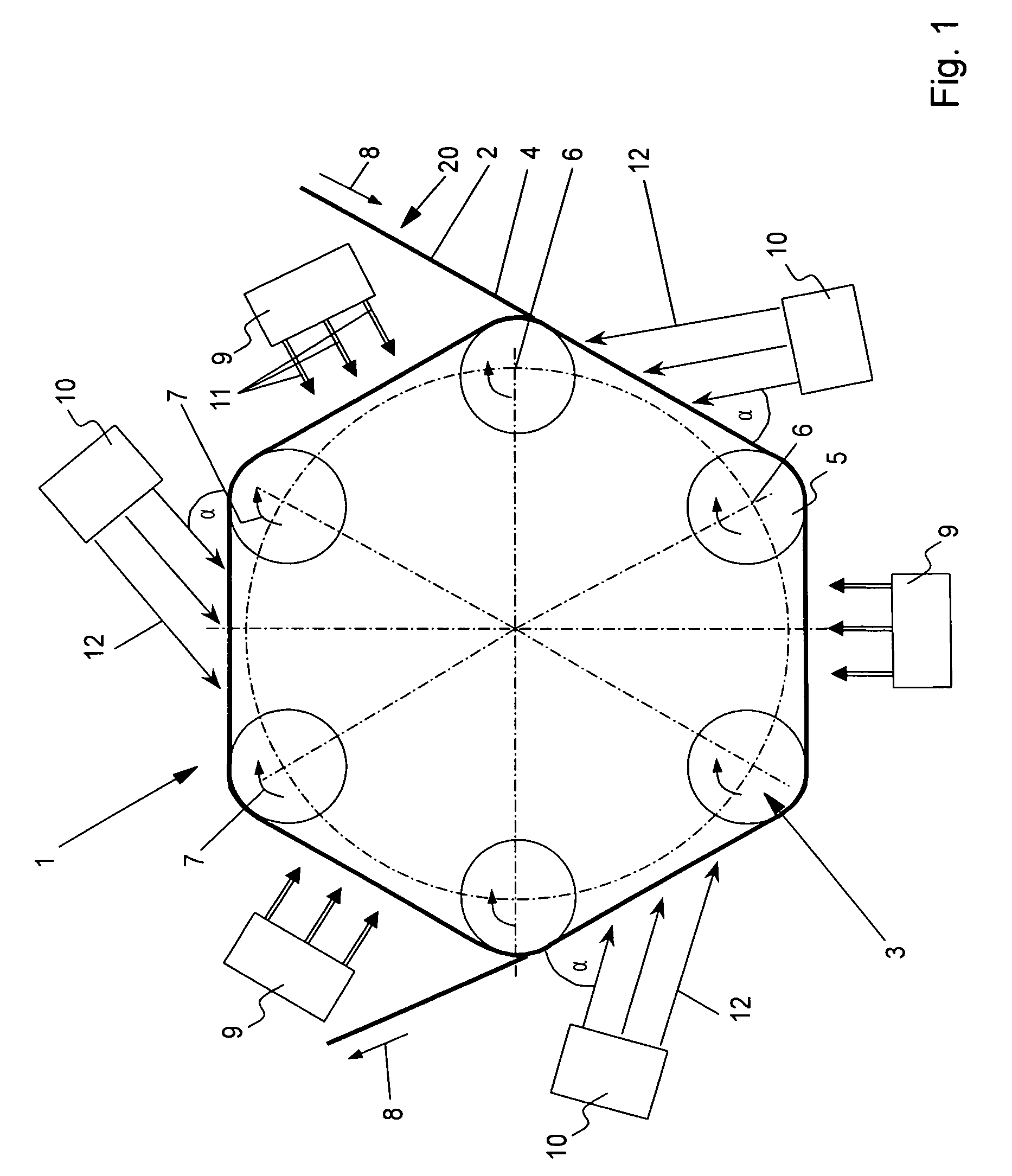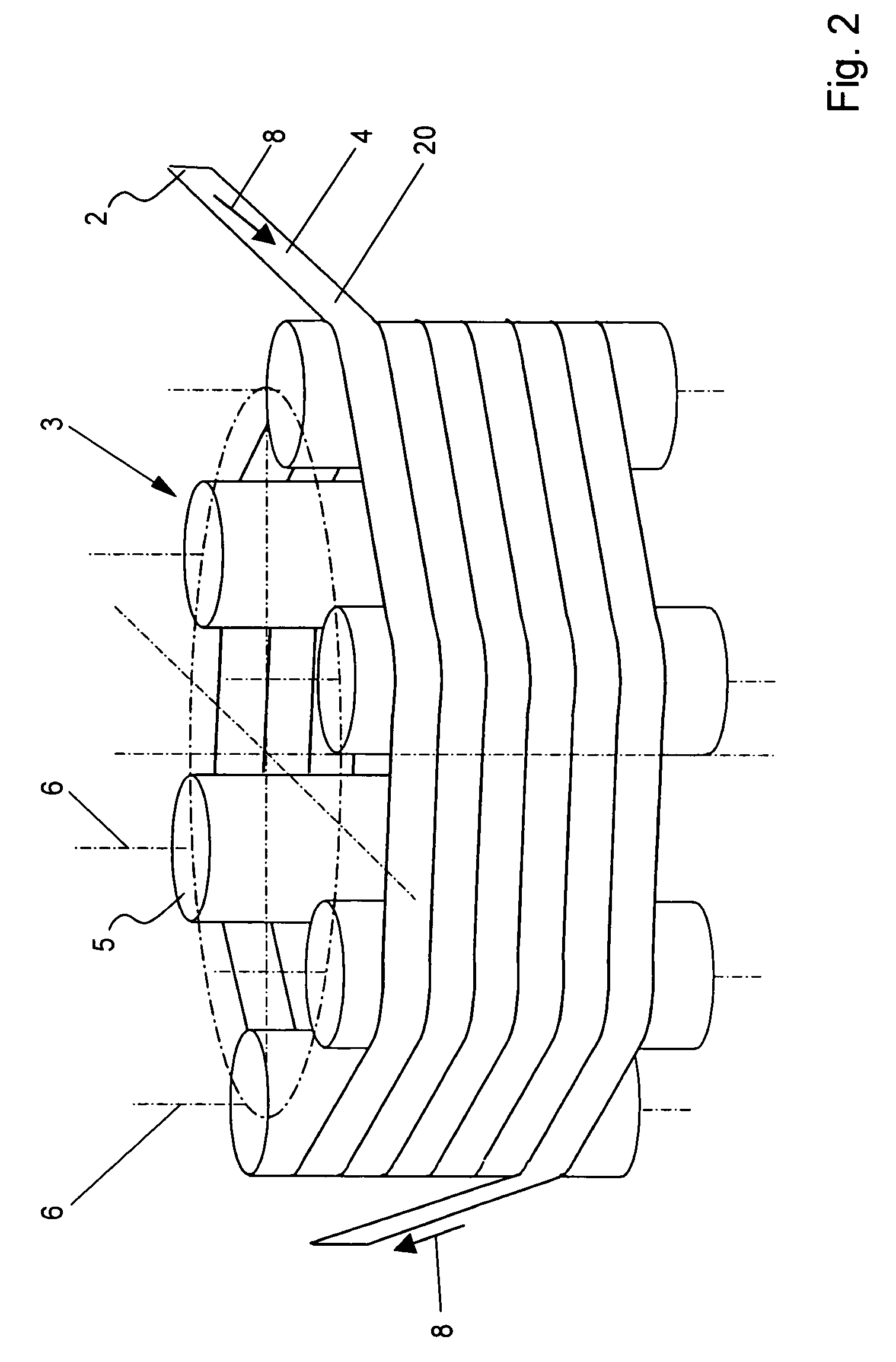Method and apparatus for producing biaxially oriented thin films
a thin film, biaxial crystal technology, applied in the direction of instruments, heat measurement, therapy, etc., can solve the problems of not much room in the known apparatus, weak efficiency of the known ibad method of producing thin films with the desired biaxial crystal orientation, and limited range of argon ions within the thin film. only a few nanometers
- Summary
- Abstract
- Description
- Claims
- Application Information
AI Technical Summary
Benefits of technology
Problems solved by technology
Method used
Image
Examples
example 1
[0051]According to the present invention, a textured thin film 17 of zirconium oxide being stabilized with yttrium oxide (YSC) was deposited on a tape 4 made of stainless CrNi steel. The tape 4 of stainless steel had a length of 10 m, a width of 4 mm and a thickness of 0.1 mm. The surface 20 of the substrate 2 had been polished electrochemically to limit the surface roughness to 4 nm. The tape 4 was wound up about the drum 13 of the apparatus 1 according to FIGS. 3 and 4. The apparatus 1 was then arranged in a vacuum chamber (not illustrated in FIGS. 3 and 4). An ion sputter source was used in the vacuum chamber as the source 9 for atoms, and an ion beam source was used as the source 10 for an energized beam. The diameter of the drum 13 was 1 m. The ion beam source provided an ion beam of argon ions at an angle of incidence of between 51° to 58° with respect to the tape 4. The ion beam source was an ion gun of the “Kaufmann” type with a diameter of 11 cm which delivered particles wi...
example 2
Prior Art; For Reasons of Comparison Only
[0052]For reasons of comparison, a textured layer of zirconium oxide being stabilized with Yttrium oxide (YSC) was produced according to the prior art as disclosed in U.S. Pat. No. 5,432,151, meaning the IBAD method. The conditions of this example were the same ones as in example 1 with the exception of the influence regions of the two sources 9 and 10 on the tape 4 being superimposed. This means that the source 10 in FIG. 3 was rotated about the rotational axis 14 by 180° with respect to the source 9. Furthermore, the influence region of the energized beam 12 on the tape 4 was adapted with respect to its size to the influence region of the source 9 on the tape 4 such that both regions were 80 mm×80 mm. After a time of experimentation of 3.9 hours, one attained a textured thin film 17 having a thickness of 500 nm the biaxial crystal orientation of which was described during an X-ray analysis by a full width at half maximum (phi scan) of 25°. ...
example 3
[0053]Example 3 which was conducted according to the present invention generally was conducted under the same conditions as example 1 with the exception of the time of experimentation being increased to 7.4 hours. The attained textured thin film 17 had a thickness of 850 nm, and its biaxial crystal orientation showed a full width at half maximum (phi scan) during X-ray analysis of 14°.
PUM
| Property | Measurement | Unit |
|---|---|---|
| thickness | aaaaa | aaaaa |
| angle | aaaaa | aaaaa |
| angle | aaaaa | aaaaa |
Abstract
Description
Claims
Application Information
 Login to View More
Login to View More - R&D
- Intellectual Property
- Life Sciences
- Materials
- Tech Scout
- Unparalleled Data Quality
- Higher Quality Content
- 60% Fewer Hallucinations
Browse by: Latest US Patents, China's latest patents, Technical Efficacy Thesaurus, Application Domain, Technology Topic, Popular Technical Reports.
© 2025 PatSnap. All rights reserved.Legal|Privacy policy|Modern Slavery Act Transparency Statement|Sitemap|About US| Contact US: help@patsnap.com



